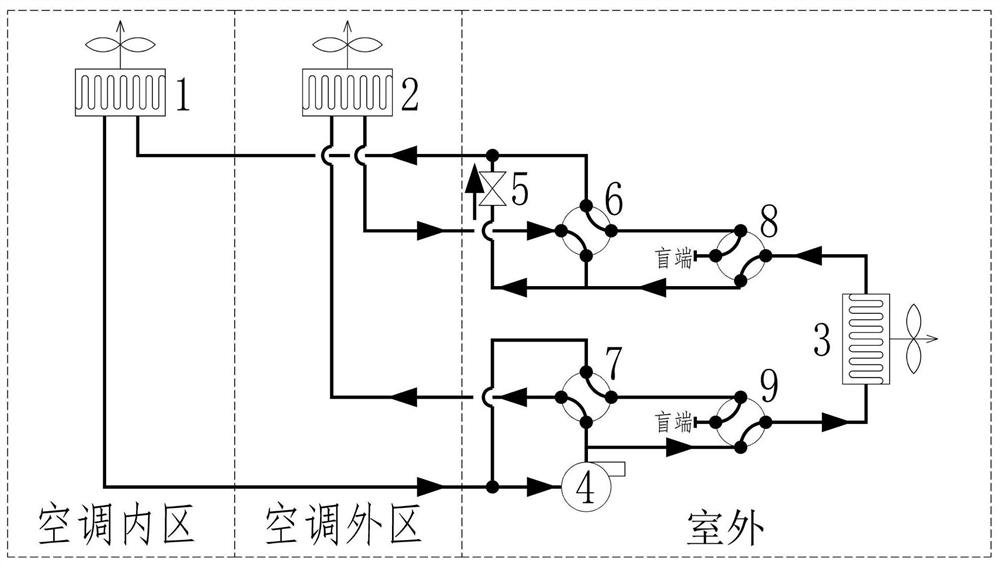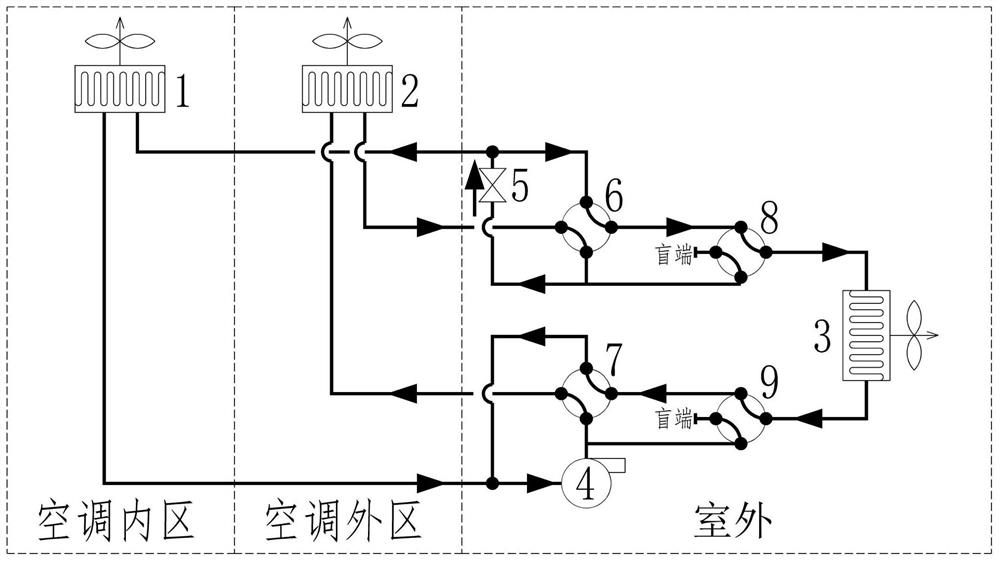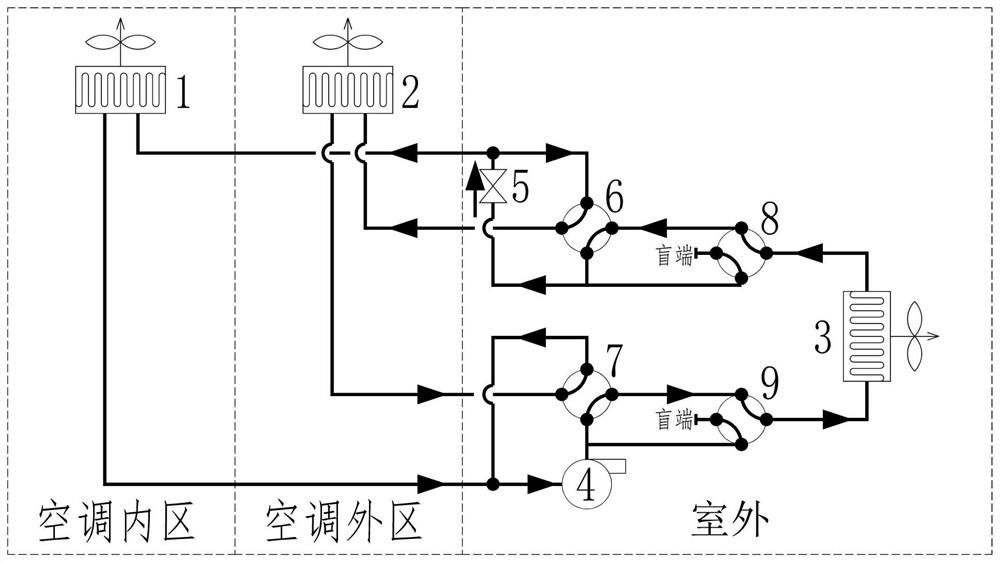Utilization method of waste heat inside building and central air-conditioning system
An air-conditioning and waste heat technology, which is applied in air-conditioning systems, ventilation systems, heating methods, etc., can solve problems such as application constraints of multi-connected central air-conditioning systems, and achieve the goal of reducing defrosting time, reducing frosting degree, and improving comprehensive performance coefficient Effect
- Summary
- Abstract
- Description
- Claims
- Application Information
AI Technical Summary
Problems solved by technology
Method used
Image
Examples
Embodiment 1
[0034] see figure 1, in winter, the cooling load of the air conditioner is Q1 in the inner area of the air conditioner, and the heating load of the air conditioner in the outer area is Q2; the 4-shaft power of the compressor is N; When it is greater than or equal to the heat load of the air conditioner in the external area, the refrigerant enters the compressor 4, and the conduction direction of each of the four-way reversing valves is regulated, so that the refrigerator is divided into two paths after exiting the compressor 4, and one path enters the compressor 4. The second air heat exchanger 2, the second air heat exchanger 2 performs the function of a condenser, releases heat Q2 to the outer area of the air conditioner, and supplies heat to the outer area of the air conditioner; the other way enters the third air heat exchanger 3 , the third air heat exchanger 3 functions as a condenser to release heat Q1+N-Q to the outside; when Q1+N=Q2, the refrigerant does not ent...
Embodiment 2
[0036] see figure 2 , in winter, the cooling load of the air conditioner is Q1 in the inner area of the air conditioner, and the heating load of the air conditioner in the outer area is Q2; the 4-shaft power of the compressor is N; When the heat load of the air conditioner in the outer area is less than that of the external air conditioner, the refrigerant enters the compressor 4, and after being compressed by the compressor 4, enters the second air heat exchanger 2; the second air heat exchanger 2 functions as a condenser, Heat Q2 is released to the outer area of the air conditioner, and heat is supplied to the outer area of the air conditioner; after the refrigerant releases heat, it enters the expansion valve 5, and the refrigerant is expanded and throttled by the expansion valve 5 and divided into two paths; one path enters the first air exchange Heater 1, the first air heat exchanger 1 performs the function of an evaporator, absorbs heat Q1 from the inner area of ...
Embodiment 3
[0038] see image 3 , in summer, the inner area of the air conditioner is refrigerated, the cooling load of the air conditioner is Q1, the outer area of the air conditioner is refrigerated, and the cooling load of the air conditioner is Q2; the 4-shaft power of the compressor is N; when both the inner and outer areas of the air conditioner are cooled, the first air heat exchange Both the evaporator 1 and the second air heat exchanger 2 function as evaporators, and the third air heat exchanger 3 functions as a condenser; the refrigerant enters the compressor 4 and enters the third air after being compressed Heat exchanger 3; the third air heat exchanger 3 functions as a condenser to release heat Q1+Q2+N from the outdoor air; after the refrigerant releases heat, it enters the expansion valve 5, and the refrigerant passes through the expansion valve 5 expansion joint After the flow, it is divided into two paths; one path enters the first air heat exchanger 1, and the first ai...
PUM
 Login to View More
Login to View More Abstract
Description
Claims
Application Information
 Login to View More
Login to View More - R&D
- Intellectual Property
- Life Sciences
- Materials
- Tech Scout
- Unparalleled Data Quality
- Higher Quality Content
- 60% Fewer Hallucinations
Browse by: Latest US Patents, China's latest patents, Technical Efficacy Thesaurus, Application Domain, Technology Topic, Popular Technical Reports.
© 2025 PatSnap. All rights reserved.Legal|Privacy policy|Modern Slavery Act Transparency Statement|Sitemap|About US| Contact US: help@patsnap.com



